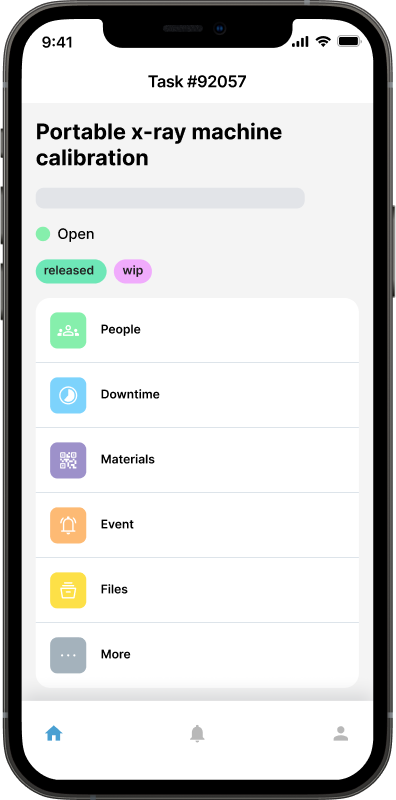Scalability Simplified: Web-Based CMMS Grows with Your Business Needs

Efficient operations sustain growth and profitability; Computerized Maintenance Management System (CMMS) software helps achieve this. While CMMS software are designed to streamline maintenance in manufacturing, they have evolved to cater to different industries. Web-based CMMS, for instance, offers scalable solutions using cloud technology. This flexibility supports expanding organizational needs and can adapt as businesses grow.
In this article, we will discuss the importance of CMMS in modern maintenance strategies and emphasize how web-based platforms enhance scalability. We will also offer practical tips for implementation and insights into how this technology supports sustainable business growth in various operational environments.
What is Web-Based CMMS?
A web-based CMMS, also known as a cloud-based CMMS, operates entirely over the Internet and is hosted by a service provider. It allows maintenance teams to manage assets, schedule work orders, and track maintenance activities from any Internet-connected device.
Unlike on-premise CMMS solutions, web-based systems eliminate the need for costly IT infrastructure and enable automatic updates. This accessibility is particularly effective for businesses seeking scalability. This is due to CMMS solutions facilitating seamless integration with other cloud-based applications like ERP systems and IoT devices.
Moreover, the best CMMS software offers enhanced data security through encrypted connections and robust backup systems. This way, critical maintenance data is protected against loss or unauthorized access. This flexibility and security also make web-based CMMS a preferred choice for modern businesses looking to optimize maintenance operations while accommodating growth and technological advancements.
Best Practices on Using Web-Based CMMS

With the powerful capabilities of a web-based CMMS, you must fully utilize its potential to streamline maintenance processes, improve asset management, and minimize downtime. Implement these best practices to ensure your organization maximizes the system's advantages and efficiency for smooth operations and scalability.
Define Clear Objectives. Establish clear goals and objectives for implementing the web-based CMMS. This could include improving maintenance efficiency, reducing downtime, or enhancing asset management.
Engage Stakeholders. Involve key stakeholders across departments. Include the maintenance teams, IT, and management to ensure buy-in and alignment with organizational goals.
Data Accuracy and Integrity. Keep the data in the web-based CMMS accurate and current. Regularly audit data inputs and ensure consistency to improve decision-making and reporting accuracy.
Training and Onboarding. Provide comprehensive training for all users to ensure they understand how to use the web-based CMMS effectively. Include ongoing education as new features or updates are introduced.
Customization and Configuration. Tailor the web-based CMMS to fit your organization's specific workflows and requirements. Customize fields, reports, and dashboards to enhance usability and relevance.
Integration with Existing Systems. Integrate the web-based CMMS with enterprise systems such as ERP, inventory management, or IoT platforms. This will streamline data flow and improve overall operational efficiency.
Regular Maintenance Scheduling. Utilize preventive maintenance scheduling capabilities to proactively manage equipment and reduce unexpected breakdowns. Configure automated alerts for maintenance tasks.
Mobile Access and Real-Time Updates. Leverage mobile capabilities to allow maintenance technicians to access and update information from the field in real time. This improves responsiveness and reduces downtime.
Performance Monitoring and Analytics. Use built-in analytics tools to monitor web-based CMMS performance, track key metrics, and identify areas for improvement in maintenance processes.
Security and Data Protection. Ensure robust security measures are in place to protect sensitive maintenance and asset data. Regularly revise security protocols and educate users about optimal practices.
Continuous Improvement. Foster a culture of continuous improvement by regularly reviewing web-based CMMS usage. You can also gather user feedback and implement enhancements based on insights and industry best practices.
Vendor Support and Updates. Choose a reputable web-based CMMS provider with reliable customer support, regular updates, and scalable solutions to accommodate future growth and evolving business needs.
How Web-Based CMMS Ensures Scalability
The expansion of the CMMS market is driven by the rising adoption rates among small to mid-sized businesses and increasing demand in the energy and utility sectors. In fact, the value of the CMMS market is expected to grow to $4,215.1 million by 2033. Given this trend, your business must stay competitive and harness the scalability benefits offered by web-based CMMS solutions.
Flexible User Management
Flexible user management allows businesses to easily add or remove user accounts as their maintenance teams evolve. With no need for additional software licenses or hardware installations, the web-based CMMS provider handles backend infrastructure for seamless scalability. This flexibility is particularly advantageous for rapidly growing companies or those with fluctuating maintenance staff. With flexible user management, businesses can adapt their maintenance operations efficiently, without incurring unnecessary costs or system constraints.
Asset Management
Asset management offers centralized, cloud-hosted capabilities that can expand to meet growing maintenance demands. Web-based CMMS leverages the cloud for unlimited storage and processing power. This way, it accommodates an expanding number of assets, work orders, and maintenance records without performance degradation. This scalability extends to integration with other enterprise systems like ERP and IoT devices for comprehensive asset data aggregation and seamless operational continuity.
As organizations scale their asset base, web-based CMMS systems automatically sync maintenance schedules and inventory. This allows agile adaptation without the IT overhead and manual upgrades typical of on-premise solutions.
Data Storage and Processing

Data storage and processing in web-based CMMS harnesses the cloud's cloud's extensive storage and computing capabilities. Web-based CMMS scales up to handle increasing assets, work orders, and maintenance records without performance drawbacks. Its centralized, cloud-hosted architecture also integrates seamlessly with ERP and IoT systems for comprehensive data aggregation and real-time insights across the asset portfolio.
Web-based CMMS dynamically scales storage and processing as maintenance data grows. This system ensures efficient management and analysis without the constraints and IT overhead of traditional on-premise setups.
Modular Features
Modular features in web-based CMMS solutions provide businesses with a flexible architecture that allows customization based on specific needs. These systems offer pick-and-choose functionality, allowing organizations to begin with essential features like work order management and asset tracking. This enables it to expand gradually by integrating modules such as inventory management, predictive maintenance, or advanced reporting tools as your operational requirements grow. This modular approach increases flexibility and improves cost-effectiveness, as businesses can invest selectively in modules that directly improve maintenance operations.
Moreover, phased implementation of modular features facilitates smooth transitions that minimize disruptions and enable teams to adjust gradually to the system's capabilities. As new requirements emerge or technologies advance, web-based CMMS can seamlessly integrate new modules via cloud-based platforms for continuous scalability without the limitations of on-premise solutions.
Gain Unparalleled Business Excellence with Web-Based CMMS
A web-based CMMS offers tons of benefits for growing businesses. From predictive maintenance to streamlined workflows, these systems drive efficiency gains, cost savings, and operational excellence.
By embracing cloud technology, you can future-proof your maintenance management strategies and leverage flexible and customizable solutions that adapt to your unique needs and operational growth trajectories.

